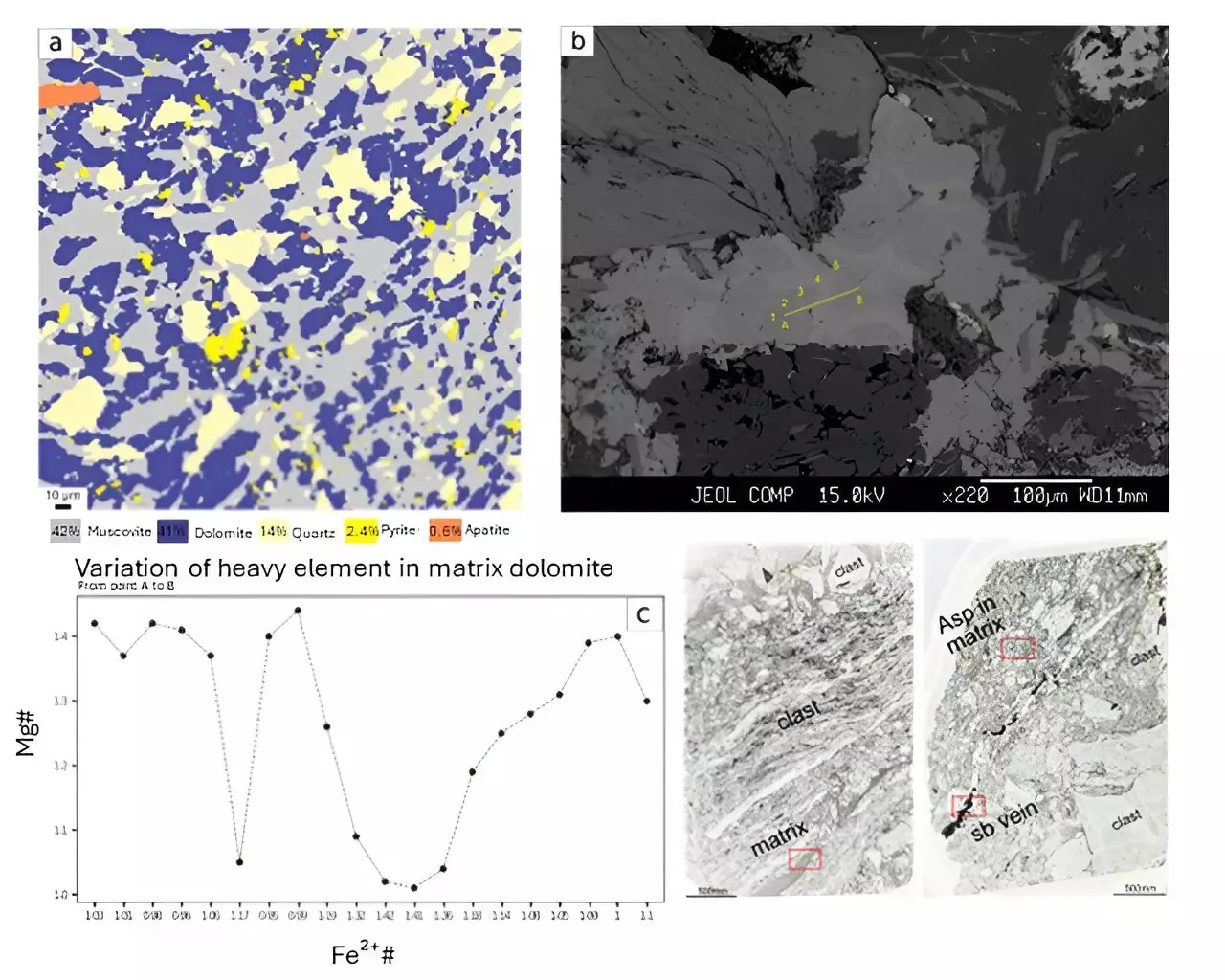In 2017, during a research field trip to the Ichinokawa Mine in Ehime prefecture, Noriyoshi Tsuchiya, a professor at the Graduate School of Environmental Studies, stumbled upon a remarkable discovery. While most people would be captivated by the dazzling sword-shaped stibnite crystals in the mine, Tsuchiya’s attention was drawn to a seemingly mundane sedimentary rock formation known as breccia. Despite its unassuming appearance, this breccia held a treasure trove of information about the seismic history of the region, specifically in relation to past earthquakes.
The Ichinokawa breccia stands out as a unique geological formation capable of preserving a chronological record of the frequent seismic activity along the Median Tectonic Line (MTL) in southwest Japan. The MTL, a massive fault line stretching approximately 1,000 kilometers, experiences significant tectonic movements, making the breccia found in this area particularly valuable for researchers. Through a meticulous assessment of the fragmented rocks both in the field and laboratory settings, Tsuchiya and his team were able to extract thin slices for microscopic examination. Their findings, published in Scientific Reports on May 27, 2024, shed light on the energy released by past earthquakes through statistical and fractal analyses of angular deformation and texture variations in the rocks.
One of the key revelations from the study was the estimation of the energy dissipated by previous earthquakes, which was found to be significantly higher than anticipated based on laboratory experiments involving single impact fractures on rocks. By meticulously studying the characteristics of the breccia, such as the presence of carbonates like CaMg(CO3)2, Tsuchiya and his team were able to deduce the recurring nature of the seismic events that led to the pulverization of rocks into finer particles. Their research indicated that the Ichinokawa breccia formation was likely the result of multiple earthquakes ranging in magnitude from 5.8 to 8.3 Mw, challenging existing models of earthquake history that focused solely on hydrofracturing theories.
Through a collaborative effort with the National Institute of Technology and Hachinohe College, Tsuchiya’s study has the potential to revolutionize our comprehension of the coseismic energy budget in the region. By adopting a multi-disciplinary approach that considers a wide range of factors influencing the breccia formation, the research team has paved the way for a more nuanced model of seismic events in the area. This groundbreaking study not only underscores the importance of geological research in unraveling the Earth’s history but also highlights the need for comprehensive analyses to deepen our understanding of seismic activities worldwide.
The unexpected discovery of the Ichinokawa breccia serves as a poignant reminder of the hidden gems waiting to be unearthed in our planet’s geological tapestry. By delving into the intricate details preserved in rocks and minerals, researchers like Noriyoshi Tsuchiya are able to piece together the puzzle of Earth’s seismic past, offering invaluable insights into the forces that shape our world.



Leave a Reply